The concepts of 50 Hz and 60 Hz are at the center of power system design and operations all over the world. They are the angles around which power system designs, as well as the regulatory aspects, are centered. Powered by these two frequencies, power grids everywhere could not be any more different in terms of how they are being used, depending on the geographic location and sector. However, one may ask why the power system frequencies are different in different countries. Let us dig deep into this topic and see how these frequencies have a big effect on the use of technology, demand from industries, and people’s daily life. This article is the right place to read about the scientific aspects of these frequencies, their historical significance, and their role in various sectors and countries. Regardless if you are just a curious person, a student or a professional in the field, this site will ensure that you get a clear understanding of the underlying details of 50Hz and 60Hz and how they are impacting the real world. Be ready to stoke your interest in the very basic principles that are operating modern society.
Introduction to Frequency Systems
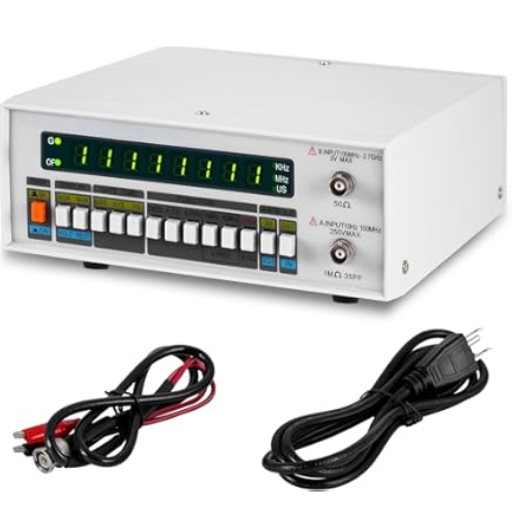
Frequency systems are integral to how electrical power is generated and distributed globally. The two most commonly used frequencies are 50Hz and 60Hz, which refer to the number of cycles per second at which electrical current alternates in an AC (alternating current) system.
These frequencies were chosen for various historical and technical reasons, with the design of early electric generators and regional preferences being some examples. While 60Hz is the dominant frequency in areas such as North America, 50Hz is the norm in Europe, Asia, and nearly all of Africa. The frequency selected can considerably influence the layout and the performance of electrical equipment and infrastructure. Therefore, having a good knowledge of these systems is essential for controlling energy use and ensuring the ease of use of devices on a global scale.
What is Frequency?
The term frequency in the domain of physics and engineering refers to the number of cycles of a periodic event or wave that occur in one second. The definition of frequency is in hertz (Hz), where one hertz is equal to one cycle per second. For example, electrical systems use frequency to communicate how many times the current changes its direction per second, which is the main feature of alternating current (AC) power systems. Frequency is a critical issue for the operation of power and communication systems, affecting synchronization and compatibility among devices. By exploring the frequency concept more deeply, one can contribute to improving the overall system reliability, efficiency, and functionality across different sectors.
Overview of 50Hz and 60Hz
50Hz and 60Hz are the most common frequencies found in the AC power systems all over the world. These frequencies have been chosen for their compatibility with energized grids, devices, and appliances, allowing them to work without any noticeable hitches. 50Hz is the most common frequency in Europe, Asia, and Africa, while 60Hz is more common in North America, parts of South America, and other regions.
The key point of these frequencies is that they affect the efficiency and application range of the electrical systems where they are used. For example, 60Hz systems achieve the highest efficiency for motors and transformers due to their reduced iron losses. Take 50Hz as a case in point; longer transmission distances typically result in frequencies being lower than those used to achieve better power loss reduction and system stability maintenance.
The user can alter the device’s appearance through the frequency of a signal, and many items, such as electronics and home appliances, are designed to operate on either 50Hz or 60Hz. To ensure the same hardware is used in both cases and to avoid efficiency issues, these differences must be understood. If the same equipment is used in both places, it becomes even more important to know its operational basics.
Historical Context of Frequency Standards
The introduction of frequency as the main parameter for the power systems began during the late 19th and early 20th century with the regional electrification program. These were the times when different areas and companies could set their own frequencies, as technical limitations did not pose any restrictions, equipment was easily obtainable, and each region had its own preference. Europe and Asia found 50Hz to be the most suitable, and they both made it their standard, while in North America, manufacturers predominantly offered 60Hz. The split traces directly back to the initial decisions of the biggest companies, the personal judgments of inventors like Nikola Tesla and Thomas Edison, and the different production and economic environments across the continents.
The long-standing dilemma of regional standards is the primary focus of modern research and evaluations, as frequency shifting requires significant investment and infrastructure modifications. The historical frequency choice not only determined industrial development but also hindered international business and the merging of worldwide electric-power transmission systems. As of today, some of these problems have been minimized by advances in frequency converters and technology, yet the global power landscape is still based on past choices.
Technical Differences Between 50Hz and 60Hz
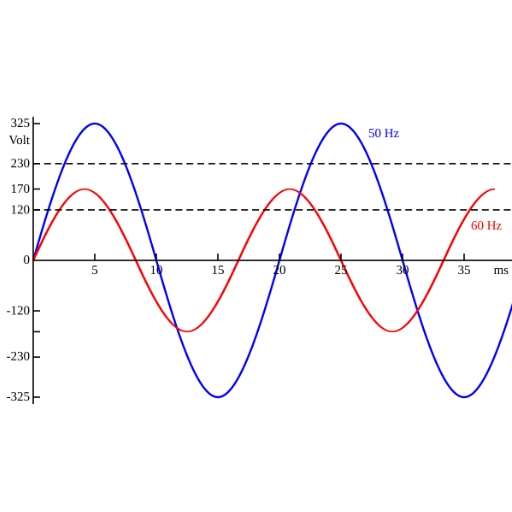
The main technical dissimilarity of 50Hz and 60Hz systems traces back to the rate at which the alternating current (AC) reverses direction. This dissimilarity has a significant impact in several key areas:
- Efficiency and Power Loss: At higher frequencies, such as 60Hz, energy losses tend to be lower in electrical systems, making it slightly better for specific applications.
- Rotational Speed of Machines: Machines are designed based on the frequency of the electrical circuit. It is normal for 60Hz machines to have higher speeds compared to 50Hz machines if the design specifications are the same.
- Transmission and Transformer Design: The Converters and Transmission Lines will have to be customized to operate at the frequency. Thus, people using 50Hz systems will generally have more prominent cores in their transformers, even though they might need to invest more money in the process.
- Availability of Equipment: In areas where 50Hz is the standard, the equipment made is only for that frequency, and the same is true for 60Hz regions. In trying to evacuate or operate in systems of different frequencies, the equipment’s standards do not match, which may lead to other issues.
At the same time, the two frequencies are globally adopted, but without high technology, integrating them will cause system incompatibility issues for those designed for one frequency in another region.
Electrical Characteristics of 50Hz
- Voltage Levels: Generally, the power demand in 50 Hz systems is met by the voltages of 230V and 400V for households and industrial use, respectively. In the meantime, networks for this level of power distribution use the voltages of 11kV or 33kV.
- Cycle Duration: If the standard frequency for power generation is 50Hz, this means the rise and fall of the current occur 50 times per second. The time taken for each cycle to be completed is 20 milliseconds.
- Efficiency in Transmission: The 50Hz systems can be employed to transmit power only, although it is a challenging task because the transmission line will incur high power losses, and the power system will not remain stable.
- Magnetics in Transformers: At 50Hz, the magnetic core of the transformer and motor prototypes is typically built slightly larger than that of 60Hz systems to reduce the losses due to magnetic hysteresis and eddy currents.
- Synchronization Standards: The power grid operating at 50Hz requires very high-quality synchronization to maintain a stable frequency. Even a slight deviation can cause the entire system to operate unsustainably, leading to inefficiencies and outages.
- Harmonics Generation: Being an AC system just like any other, a 50Hz network is capable of producing harmonic frequencies, which might sometimes require the use of costly solutions like filters to have a grid with the highest quality power delivery, that you will not even need to spend much on repair and the associated expense.
Electrical Characteristics of 60Hz
- Frequency and Efficiency: When operated at the frequency of 60Hz, this system is usually installed in North and parts of South America. The advantage of a slightly higher frequency over 50Hz results in fewer core losses and better efficiency of equipment, such as motors and transformers.
- Voltage Standards: 60Hz systems are used in residential applications with voltage standards like 120V, 240V, and even higher voltages for different industries and businesses. The overall match ensures that compatibility is maintained both in devices and regional infrastructure.
- Magnetic Losses: 60Hz systems indeed have slightly lower losses due to the magnetic hysteresis in the core materials than 50Hz networks, thus making it possible for specific applications to run more efficiently.
- Transmission System Characteristics: At 60Hz, the inductive reactance of transmission lines will be seen to be rising vis-à-vis 50Hz systems, which again could drastically influence the design and selection of line equipment, including the cables and transformers.
- Synchronization Standards: In the case of 60Hz systems, as with 50Hz networks, synchronization will be critical, and frequency deviations must be minimal to prevent the entire system from becoming unstable and inefficient.
- Harmonics and Power Quality: In a 60Hz system, like its 50Hz counterpart, harmonic frequencies are considered. Solutions such as harmonic filters and other mitigation techniques are introduced to maintain high power quality and thus minimize distortion.
Compare Differences Between 50Hz and 60Hz
| Key Point | 50Hz | 60Hz |
|---|---|---|
| Frequency | 50 cycles per second | 60 cycles per second |
| Common Regions | Europe, Asia, Africa | North America, parts of South America |
| Voltage Standards | Typically 220-240V | Typically 110-120V |
| Energy Efficiency | Slightly lower than 60Hz | Slightly higher than 50Hz |
| Transformer Size | Larger compared to 60Hz | Smaller due to lower core size |
| Equipment Compatibility | Not suitable for 60Hz equipment | Requires conversion for 50Hz devices |
| Motor Speed | Slower | Faster |
| Cost-Efficiency | Economical for large-scale systems | Higher in operation and maintenance |
| Harmonic Distortion | Similar with proper mitigation | Similar with proper mitigation |
| Grid Synchronization | Precision required | Precision required |
Practical Applications of 50Hz and 60Hz
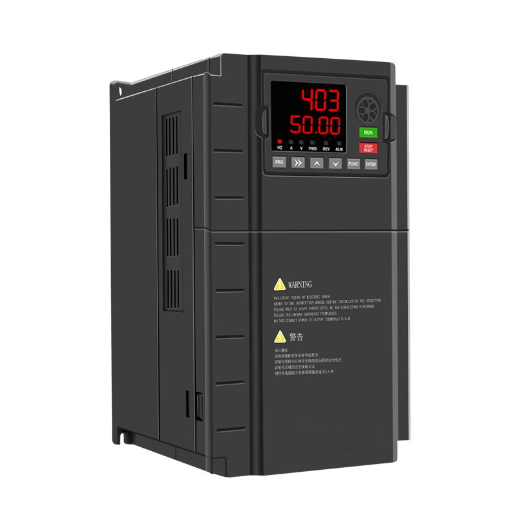
Two systems, 50Hz and 60Hz, are being implemented in different fields all over the world because of the prevailing standards and different requirements:
50Hz Applications
Europe, Asia, and Africa are the primary markets where 50Hz systems have been adopted. The sources of power for the residential sector, industry, and public infrastructure are all 50Hz systems. It is the best choice for equipment designed according to global standards for this frequency, providing support for some lighting and heating applications with smoother operation.
60Hz Applications
The most common frequency in power systems deployed in the western hemisphere, North and South America, is the same. In the region, household power supply, major mechanical industries, and large transport systems, including the railways, are the main fields where 60Hz systems are being used. The increase in the frequency of 60Hz supports slightly more efficient motors and, therefore, is the most preferred option for equipment designed for a faster rate of operation.
Each of the two systems efficiently and satisfactorily maintains the energy flow according to local standards, thereby demonstrating that they are core elements of the energy supply in their respective regions.
Common Uses of 50Hz Frequency Supply
- Residential Power Supply: The standard household electricity frequency of 50Hz makes it possible to power appliances like refrigerators, washing machines, and air-conditioning systems.
- Industrial Applications: Factories and industries use 50Hz systems to power compressors, pumps, and conveyor belts. These machines are tailored for the frequency and provide efficient performance.
- Transportation Systems: The electric train networks in countries with 50Hz supply have been developed using compatible technologies to ensure that trains and infrastructure work together smoothly.
- Public Infrastructure: The 50Hz standard designs are the primary basis of lighting systems for roads, public parks, and urban areas, ensuring both consistency and reliability.
- Telecommunications: For the sake of cost efficiency and synchronization with the local grids, many telecommunication setups and auxiliary power systems in 50Hz regions have adopted this frequency as their own.
- Healthcare Equipment: Healthcare devices like imaging machines, ventilators, and hospital backup systems in 50Hz-dominated areas will operate at that specific power supply frequency. This ensures the continuous and smooth operation of backup systems, which require a very stable and uninterrupted power supply.
Common Uses of 60Hz Frequency Supply
- Residential and Commercial Power: Electrical networks in some parts of the United States, Canada, and South America are designed to operate at the 60Hz frequency. That is the ordinary electricity supply for residential dwellings, businesses, and cities.
- Industrial Machinery: Heavy industrial equipment in 60Hz regions, particularly in manufacturing plants and assembly lines, is designed to operate at this frequency. This setup ensures optimal energy efficiency and performance.
- High-Speed Rail Systems: Several rail systems in 60Hz regions are built to use this standard frequency. This is done for locomotion and other electrical functions of the train.
- Data Centers and IT Infrastructure: In nations with a 60Hz electricity supply, data centers synchronize their servers, cooling systems, and backup generators to enhance reliability in critical IT operations.
- Aviation and Airport Systems: Many airports using 60Hz frequency rely on this standard for operating their aircraft ground-support equipment, baggage handling systems, and terminal operations.
- Electronics and Appliances: Consumer electronics like televisions, air conditioners, and refrigerators are engineered to function together with 60Hz electricity, a power source that is dominant across many countries.
Detailed Analysis of 50Hz and 60Hz
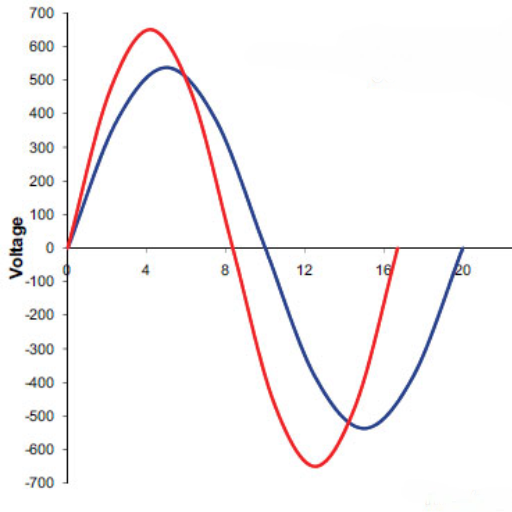
The main difference between 50Hz and 60Hz systems seems to be in the frequency of the current. This frequency defines system characteristics and is a crucial factor in selecting and applying equipment, as well as in establishing overall operational standards.
Efficiency
For motors and transformers, 60Hz systems are generally slightly more efficient, resulting in less energy loss during operation. This explains why 60Hz is well-known in countries that primarily focus on energy efficiency, such as the US.
Equipment Design
Electrical equipment and others, like motors, are built to work at the exact frequency of the place they will be used. This means you can get undesirable performance or even equipment damage if you start using equipment at slightly different frequencies.
Regional Adoption
North American countries, along with some Southern American regions, mainly use the 60Hz system, whereas in other parts of the world, the 50Hz system is more common. This utilization is not merely a matter of regional boundaries, but the historical development and choices of the local power supply companies.
Global Logistics
For power equipment manufacturers, it is necessary to consider regional standards during design to ensure their products are recognized universally or to produce region-specific models.
Important Note: Both frequencies are considered to be good for electricity use, provided that the systems are properly designed and installed in the corresponding environments. The decision between the two depends on historical, economic, and practical considerations rather than one frequency being inherently better than the other.
Benefits of 50Hz Supply
- Global Standardization: The 50Hz frequency is being used by almost 140 countries – it is a standard that is applied globally. The equipment is more interoperable, and its production costs are also cut down for international trade.
- Efficient Energy Transmission: Over a distance of shorter to moderate range, with 50Hz, the energy losses in power lines resulting from resistance are being kept at the minimum as compared to higher frequencies. These features make it an energy-efficient system for use in residential and commercial areas.
- Lower Heat Generation in Motors: In today’s modern world, electrical motors are no doubt one of the bad guys when it comes to heat production, but those that are designed for 50Hz are better in this aspect. This is a very attractive point for the industrial users as they can now save a lot on equipment maintenance costs.
- Compatibility with Global Infrastructure: Being the most common standard, 50Hz frequency is what most of the electrical equipment, home appliances, and even industrial machines are designed for or prepared for. Therefore, they become globally compatible and effortlessly operate on different continents.
- Cost-Effective Design: Generators and transformers that have been specially designed and optimized for the 50Hz system do not take much of production and maintenance cost thing to. That way, it is more of a money-wise side for both utilities and manufacturers who are into it.
- Longer Equipment Lifespan: The relatively slower speed of a motor and the less burdening components, all due to the 50Hz parameter, are the reasons why some 50Hz-dependent equipment/systems have a longer life than others in the market.
Benefits of 60Hz Supply
- Enhanced Efficiency in Certain Applications: Nowadays, modern household products and machinery that run on 60Hz are usually more energy-efficient due to smart technology operating at this frequency. In the case of the HVAC sector, the transition to using 60Hz as the main power source can result in less energy consumed (by systems based on 60Hz).
- Faster Motor Speeds: It is a generator like electric motors with a frequency of 60Hz that can run at higher speeds than 50Hz systems—such ability the factor with the highest efficiency in certain industries like production lines or conveyor-based systems.
- Wider Compatibility: When it comes to equipment, Compliance with the 60Hz frequency means that the company is focused on the North American market and the equipment is readily available. Thus, this allows quick and easy changes to be made in these areas, facilitating scalability and system expansion.
- Improved Lighting Performance: Commercial and residential lighting systems converted at 60Hz suffer less flicker and provide a more stable light output compared to the situations where lower frequencies are employed. This is especially a matter of great moment in spaces like offices, schools, and hospitals.
- Higher Power Distribution Potential: 60Hz high-voltage systems’ transformers and power lines can transfer power over long distances with less loss compared to systems used at other frequencies. For instance, the power distribution system in the United States is 60Hz-based with the aim of attaining the maximum degree of energy efficiency and thus is serving as a strong support to the energy infrastructure.
- Standard Frequency for Electronics: Most electronic gadgets of today are designed for use in 60Hz environments, including computers and consumer electronics. This ensures that the operation runs smoothly and that performance is optimal for users in regions where 60Hz is the standard.
Impact on Energy Efficiency
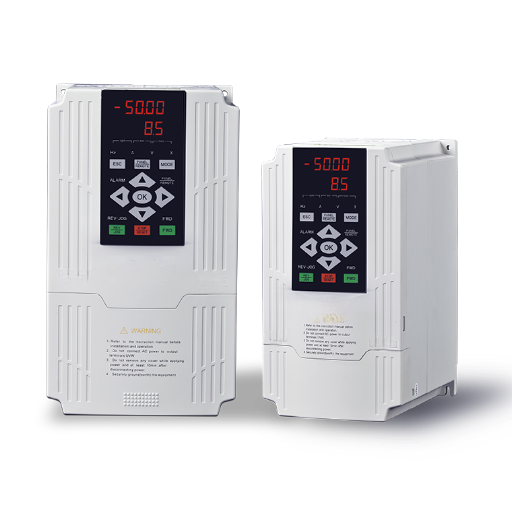
The 60Hz frequency is an essential factor for power efficiency in different systems. The 60Hz power system is well-suited for minimizing energy loss during transmission and providing a stable and reliable supply. Besides, in the 60Hz regions, most of the appliances and devices are designed for this frequency, which leads to less waste and better overall energy consumption. When regions harmonise the infrastructure and the technology, thus making them 60-Hz-conformant, they will most effectively manage the energy consumption, along with the performance and reliability staying at a high level.
Energy Consumption in 50Hz Systems
Power systems operating at 50Hz are closely related to the regional grid characteristics and the devices, which in turn are optimized for this frequency. The 50Hz power system is quite often encountered in various regions of Europe, Asia, and Africa. In these regions, the power system has been optimised to fit the infrastructure and thus operate efficiently closely. Nevertheless, the power loss across a long distance might be slightly higher in such systems due to different transmission dynamics compared to 60Hz systems.
In some places where the frequency is 50Hz, modern appliances and equipment are specifically designed to work with this frequency, ensuring compatibility without adverse effects on electrical power. Moreover, the emergence of more efficient transformers and power converters due to technological advancement has also partially minimized the 50Hz grid challenges. Motor designs can also be influenced by the lower frequency, causing some disparities in performance and power consumption. However, companies have been striving to make their products effectively handle these differences. With dynamic and innovative methods of changing infrastructure, 50Hz areas are simultaneously improving their power usage and addressing consumer needs in an ever-changing energy market.
Energy Consumption in 60Hz Systems
Regions such as North America and parts of South America frequently use 60Hz systems. These systems, more often than not, show a slight variation in power usage than their 50Hz counterpart thanks to the extra frequency. The most prominent advantage of the 60Hz grid is its effect on electrical devices and motors, providing vibration-free and high-performance operation through motors operating under increased speed and frequency conditions. Also, the higher frequency could allow the use of lighter core materials in transformers and other electrical equipment, leading to not only reduced manufacturing costs but also improved and higher efficiency.
The relevance of the 60Hz system is also linked to the local energy sources and how energy is used in the area. For example, 60Hz regions have been building their infrastructure in tune with the latest technological advancements, in which the integration of renewable energy, innovative grid technologies, and advanced energy storage systems is of significant importance. These changes have led to a substantial decrease in the power transmission process, thereby increasing the system’s reliability. In addition, such systems have demonstrated their readiness to meet the ever-growing power needs while simultaneously addressing contemporary concerns of sustainability and carbon reduction.
Reference Sources
50-60 Hz electric and magnetic field effects on cognitive function in humans: a review
Summary: This review examines the effects of 50Hz and 60Hz electric and magnetic fields on human cognitive functions. Experiments conducted in transformer stations revealed no significant cognitive impairments under exposure to 50Hz fields.
The effect of extremely low-frequency magnetic field (50–60 Hz) exposure on spontaneous apoptosis: the results of a meta-analysis
Summary: This meta-analysis investigates whether exposure to extremely low-frequency magnetic fields (50–60 Hz) influences spontaneous apoptosis (programmed cell death).
Frequently Asked Questions (FAQs)
How does using a 60Hz power supply affect electrical devices?
60Hz power supply prominently affects the operation of several motor-driven devices. One of the most common occurrences this affects is when an induction motor designed for 60Hz will often run at a more rapid RPM compared to a 50Hz one. The increased speed is directly linked with the better efficiency in applications such as fans and pumps. Nevertheless, in the opposite case, that is, if a 50Hz device is supplied with power from a 60Hz grid, it may become prone to overheating or may even develop trouble with the operation due to the frequency change. On top of that, 60Hz or 50Hz compatibility should not be taken for granted with the frequency of 60Hz being more harmful in causing damage or device breaking. Hence, it is very important to understand all the specs before you connect the devices to the 60Hz grid.
Can 50Hz and 60Hz devices operate on the same power supply?
Running devices that were designed to work at 50Hz and 60Hz from a single standard power supply may cause a lot of trouble, as each device is originally programmed to perform most optimally at its essential frequency. If a 50Hz device is plugged into a 60Hz supply, it might be “sped up,” which might lead to higher than normal temperatures or even a shorter life span. The opposite is also the case for the 60Hz devices; they can hardly be said to be running at all when connected to a 50Hz power source and in this case, they will be less efficient or even become faulty. To resolve the matter in a challenging way is to use frequency converters. In this way, the devices will reach their desired frequencies and then they can start working. Although these costly and complex solutions are not the general rule, it is, after all, still more probable than not that in the context of power supply, incorrect devices, and prices, the latter is going to be a matter to look at.
What are the implications of 50Hz vs 60Hz on induction motors?
The frequency rating greatly influences the performance of an induction motor. Normally, a 60Hz motor shall have a higher speed than a 50Hz motor and shall therefore be better adapted to the conditions where the operational speed is to be high and one is allowed to use high speeds. On the other hand, a 50Hz motor with its relatively slower speed may be found to be more suited for the slower speed applications and operational conditions while, in-turn increasing the frequency factor may make the motor characteristics entirely different; nonetheless, it could be that 60Hz motors are the best choice for the torque characteristics when a motor is loaded. Actually the worst thing that could possibly happen to a motor—be it through heating, thru less efficiency, or both—is to run it at a frequency other than that designed for it. This in fact is the reason why the frequency is an essential criterion to be taken into account in the process of selecting motors for different applications.
How does the frequency of 50 Hz affect electrical appliances?
It is a well-known scientific fact that the 50 Hz frequency is one of the major factors which determine the behavior of electrical appliances. There are multiple positive aspects assigned to the operation and electricity of electrical appliances that are checked. With the correct frequency of 50 Hz, these appliances are able to work just right, being neither too fast nor too slow, and drawing exactly the power that has been prospected for them. To give a clear example, the same- 60 Hz- light bulbs and motors would vary in brightness and torque, respectively. The motor speed is also directly affected by the number of complete cycles, while others will find their operating chance separated equally by the number of cycles. The increase of the appliance speed is a result of running a 50 Hz appliance on a 60 Hz supply. In this case, the appliance would operate at higher speeds, which would potentially lead to wear and tear.
